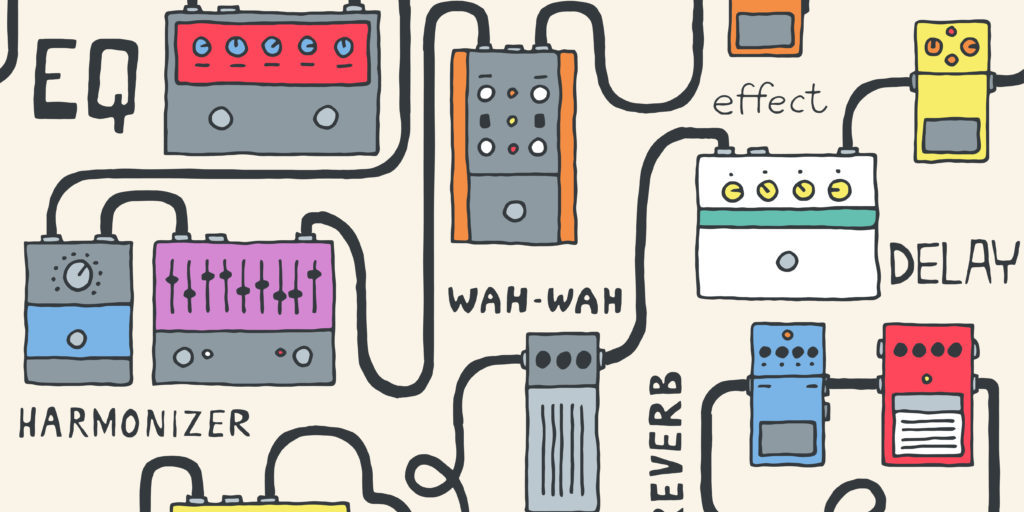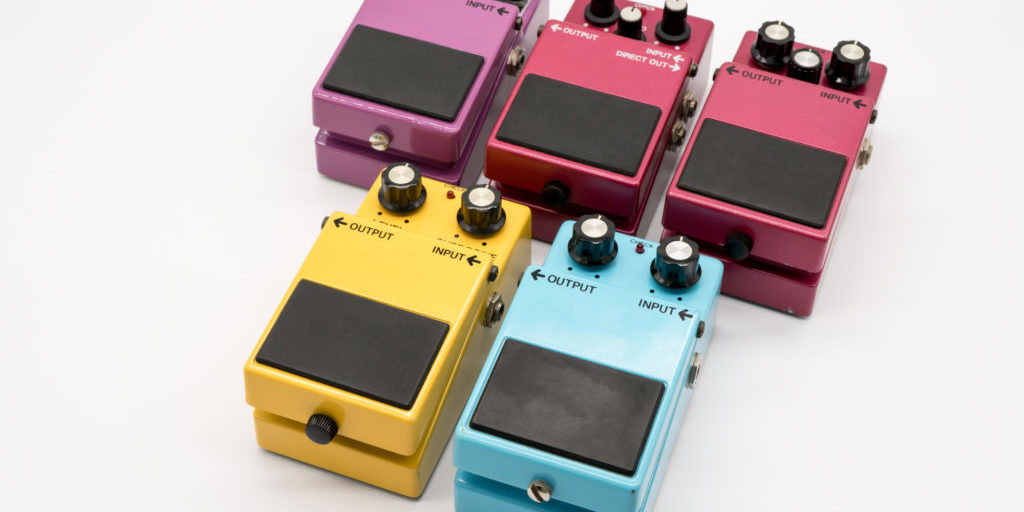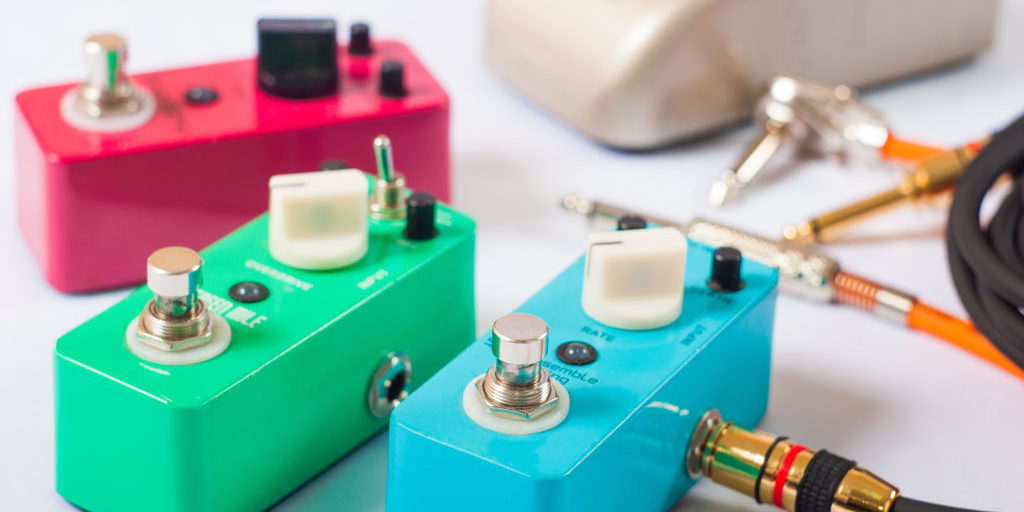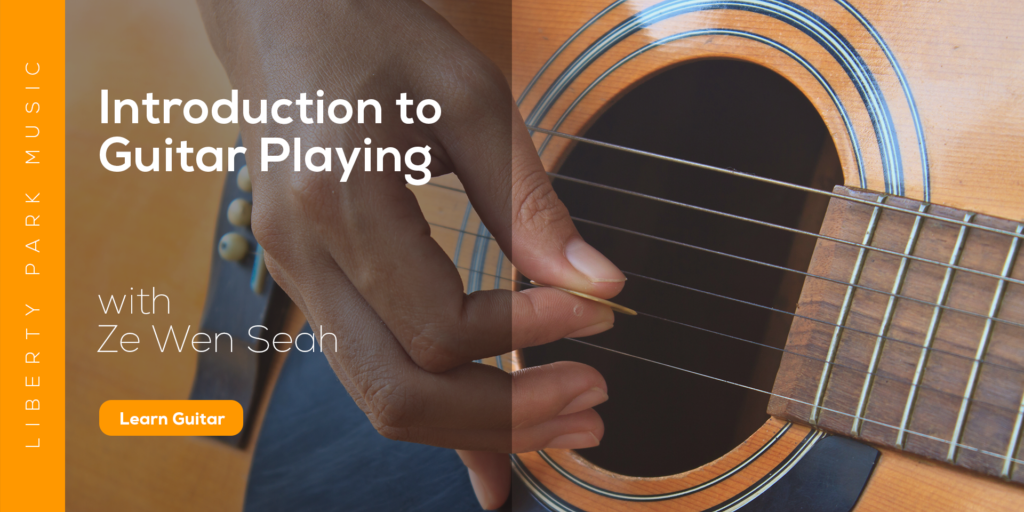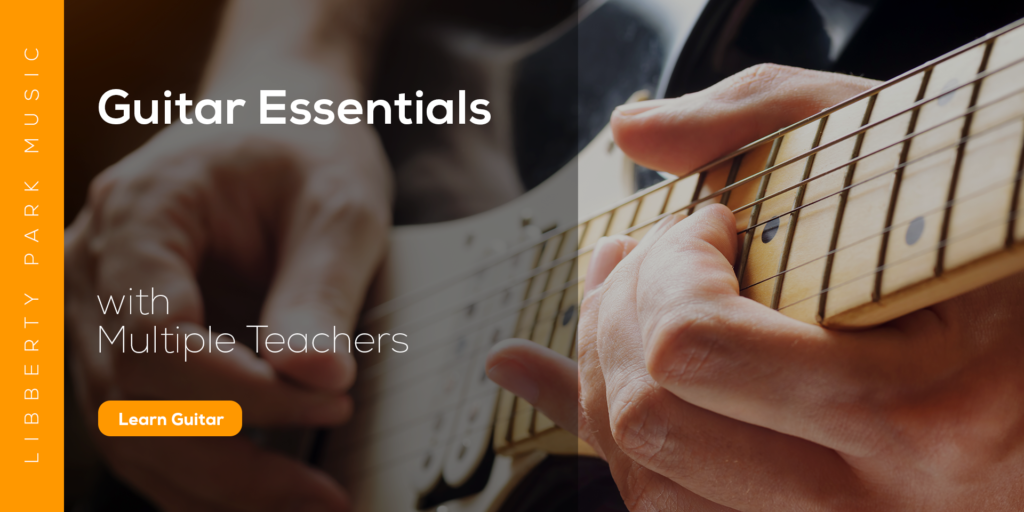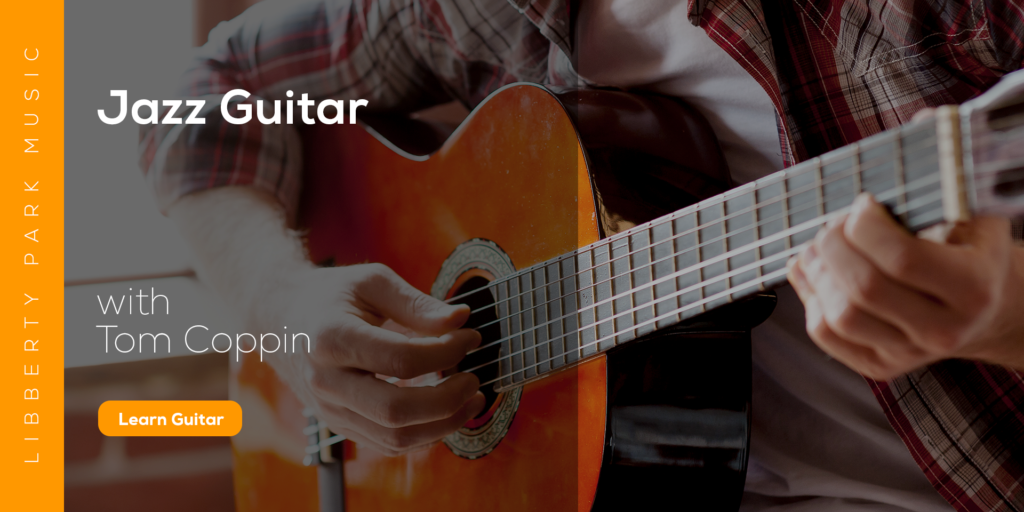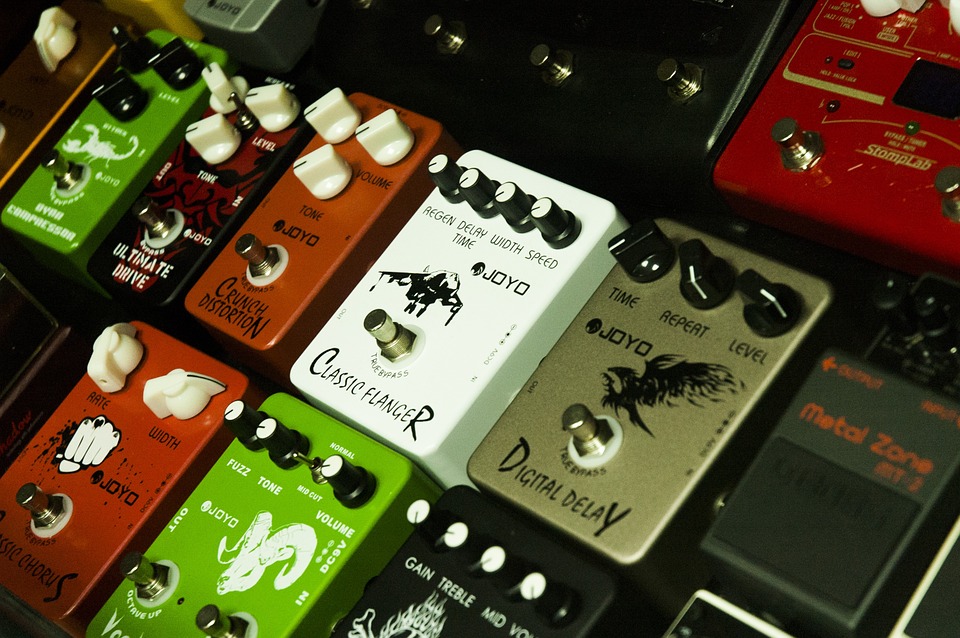
Delay pedals will almost always be on every guitarist’s pedalboard. If you’re looking to create lush soundscapes fitting for worship music, or if you’re looking to recreate the guitar tone of The Edge from U2, a delay pedal, or maybe even multiple delays, will be necessary. Perhaps the coolest characteristic of a delay effect is its ability to create a very full guitar sound with only one guitarist.
If you’re unfamiliar with what a delay pedal does, it simply records an incoming signal and replays it several times. Some delay pedals aim to replicate an incoming signal as accurately as possible, while others color the signal to achieve a specific sounding delay (i.e. Tape Echo). Regardless of what sound the delay effect is going for, its control parameters and musical uses generally stay the same.
Before diving into a list of five common delay pedals across different price ranges, let’s first check out some of the common control parameters on delay effects and what each of them does.
Time: This parameter may sometimes be called “delay,” and it’s the parameter that sets the amount of time between the original signal and the subsequent repeats. The time between the repeating delayed signals is also affected by this parameter. A longer “time” setting will result in a longer delay between the original signal and the subsequent repeated signals.
Feedback: This parameter is often called “repeats” which gives a much better representation of what it does than “feedback.” This parameter controls how many times the delayed signal is repeated after the end of the original signal. If you’d like more repeats, turn up this setting. If you’d like the signal to only repeat once, turn down this setting until you only hear one delayed note. Turning this setting up can help you achieve very full sounding guitar parts, but it can get very messy if you have too many repeated notes going at once.
Level: The Level parameter may sometimes be called “volume,” “mix,” or “output.” Technically speaking, the way a “mix” parameter works slightly differently than “level,” but they all generally do the same thing - increasing the volume of the effect. Turn this knob up to hear more of the delay effect. Generally speaking, you’ll often set the delay volume so that it is audible, but almost unnoticeable. However, some genres of music call for a much higher delay volume, so feel free to play around with this.
Tone: A delay pedals’ equalizer is the “tone” parameter, sometimes called the “EQ,” Some pedals use a “filter” parameter to achieve a similar result. With this parameter, you can adjust your delay effect so that it sounds round and mellow, or bright and harsh.
Mode: This parameter is sometimes called “type,” and it is only available on digital delay pedals. Adjusting this parameter will allow you to switch between different types of delay sounds (tape echo, analog delay, modulation delay, etc.).
Tap tempo switch: This isn’t a parameter knob on the pedal, but instead it’s a push-switch. What this switch does is it allows you to tap on it to set the “time” parameter of the effect to match up with a certain BPM (beats per minute). So for example, if you’d like to get your delay to sound like it’s rhythmically in sync with the rest of the band, all you’ll have to do is tap on the switch while the band is playing, and your effect will now be in time with the rest of the musicians. It is often much easier to set the time parameter this way.
Many simple compressors only provide two adjustable knobs: one for adjusting overall volume and another for adjusting the amount of compression on the signal.
With that out of the way, let’s check out some popular delay pedals!
1. BOSS DD-7 Digital Delay
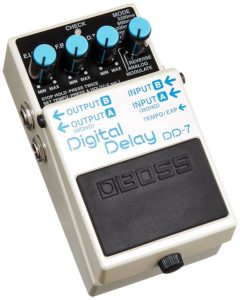
Brand New: $159.99
Used: $85 - $135
Let’s start off with one of my favorite delay pedals on the market.
This compact sized delay pedal comes in BOSS’s typical rugged housing that can withstand the worst beatings. The reason why I really enjoy using this pedal is because it’s very straightforward and has minimal adjustable settings, allowing you to quickly dial in a delay sound and jump right into playing.
I personally prefer simpler delay pedals as I often find myself spending way too much time playing around with the knobs and controls on some of the more complex delay pedals. However, because of the limited controls on this pedal, your ability to shape the sound of your delay is limited too. Thankfully, the different delay sounds provided on this pedal all sound great!
This pedal offers modulated, analog, digital, and reverse delay sounds. An additional feature is a “hold” mode that causes the pedal to behave like a loop pedal. You can record a loop up to 40 seconds long, which is great for practicing!
This pedal also offers a tap-tempo function, but it requires a few more presses on the footswitch to access it. Alternatively, you can connect an external expression pedal to act as a standalone tap-tempo switch.
Notable artists that have used this pedal include Thom Yorke, Tom Morello, Josh Homme, and Steve Vai.
Buy here
2. MXR Carbon Copy Analog Delay
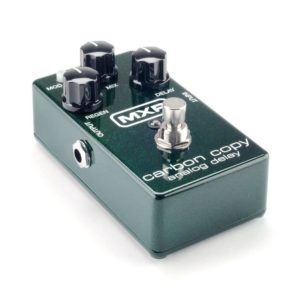
Brand New: $150
Used: $75 - $100
The MXR Carbon Copy is easily one of the most popular delay pedals on the market due to its warm and lush sound, and its simplicity in function.
While many of the digital pedals on this list will have the option to choose a “analog delay” sound, many of them often fall short compared to the real deal. While a digital delay pedal uses a DSP (Digital Signal Processor) chip to create its sounds, an analog pedal uses actual electrical components to achieve its effect. This often results in a warmer and fuller sound, although the difference between digital vs. analog is often debated in a heated manner on online forums.
Personally, I feel like the difference is big enough for me to notice, but probably not enough for a non-guitarist to hear.
The MXR Carbon Copy provides three main adjustable parameters: Regen (repeats), Delay, and Mix. A small “mod” switch can be found at the top of the pedal, and turning that on will add a modulation effect to the repeated delays. Inside the pedal there are also two knobs that can adjust the speed and depth of the modulation effect.
Although this pedal on it’s own sounds great, a downside when using an analog delay is that you only have one delay sound to work with. Another downside of this pedal is the lack of a tap-tempo switch, but the bigger brother of this pedal, the MXR Carbon Copy Deluxe, does come with one, so you may consider getting the slightly larger pedal for the tap-tempo footswitch, as well as some additional features.
The MXR Carbon Copy is used by artists like Billie Joe Armstrong, The Edge, and Wayne Sermon.
Buy here
3. TC Electronic Flashback
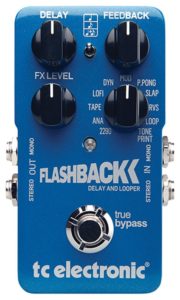
Brand New: $149.99
Used: $75 - $100
Here is a great digital delay pedal from TC Electronic. Similar to the previous two pedals, the TC Electronic Flashback is yet another easy to use delay pedal that provides adjustable parameters for delay, effects level, feedback, and delay type. Additionally, it also has a toggle switch that will allow you to adjust the subdivision of the note being delayed. What that means is, when using the tap-tempo function, instead of having the delayed notes repeating as quarter notes, you can change the subdivision to dotted eighth notes for every tap. This will allow you to get some pretty unique sounding delays.
Besides being a delay pedal, this pedal also provides a looper function that allows you to record a loop up to 40 seconds long.
There are two unique features on this delay pedal that aren’t on any other pedal on the market. The first is known as TonePrint. TonePrint is a feature that allows you to download different delay sounds to your pedal from the TonePrint website or app. All of the available sounds have been tweaked and customized by various users, and some were even created by famous artists like Steve Vai. TonePrint essentially allows you to have a limitless number of sound options.
TonePrints can be beamed to your pedal using the speakers on your phone and pickups on your guitar. To get a better idea of how this works, check out this super cool demonstration.
The other unique feature of this pedal is its tap-tempo function isn’t set by tapping your foot on the footswitch, rather, you hold down on the footswitch to mute the audio signal, and then input the tap-tempo by plucking on your guitar strings. This seems a lot more intuitive for guitarists.
There is a big-brother version of this pedal called the TC Electronic Flashback X4 that provides a few more footswitches for selecting presets and to make the looper a little easier to use, but it does take up a little more space.
Notable artists that use this pedal include Robben Ford and David Townsend.
Buy here
4. Strymon TimeLine
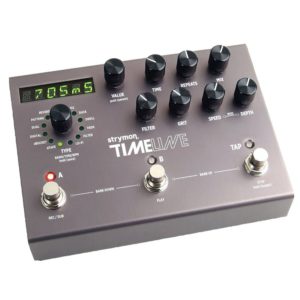
Brand New: $449
Used: $360 - $410
The previous three pedals that we’ve looked at have all been relatively compact-sized and easy-to-use pedals. In contrast, the Strymon TimeLine is what I like to think of as a “big boy” delay pedal as the number of things you can do with pedals from this price range onwards become exponentially larger.
This pedal comes with 12 different delay sounds that include your standard delays like Tape Echo and Digital Delay, as well as some really unique sounds like Ice, Swell, Trem, Filter, and Lo-Fi.
All of the sounds can be edited with the provided parameter knobs. On the top row of the pedal, knobs for time, repeats, and mix can be used to adjust their respective parameters, while the bottom row provides knobs to adjust the actual sound of the delays. “Grit” is essentially like an overdrive parameter that you can turn up to provide some drive to your repeated notes, and “Filter” is an EQ effect that can help you make your repeats sound warm and full or bright and harsh. The two additional “Speed” and “Depth” knobs are there to help you adjust the amount of modulation to the repeated notes.
Of course, just like many of the other delay pedals on this list, this pedal provides a looper that can record up to 30 seconds of music.
There are three footswitches on the pedal with one dedicated as a tap-tempo function. The other two allow you to select presets in different banks so you can switch quickly between preset sounds without having to adjust the knobs. This is one of the major upsides for larger-scale delay pedals as it allows you to change delay sounds quickly in the same song. All of the previous pedals will require you to adjust the knobs to change the delay sound.
Here is how the banks and presets work -
There are a total of 100 banks available, and each bank has two presets (A and B). The presets in each bank are selected from the A and B footswitches, while the banks can be selected by pressing either the A and B footswitches together to scroll up, or the B and tap-tempo footswitch to scroll down.
So imagine if you’re playing a song that requires a short slap-back delay during the verses but a long and lush Tape Echo style delay for the choruses, and maybe a you want to use swells during the bridge. Doing this on the previous pedals on this list will require you to bend down and adjust the delay pedal in the middle of the song, which often takes too much time.
With the Strymon TimeLine, you can just save a number of presets in different banks before a performance, and when it comes time to perform, all it takes to switch to your different delay sounds is a tap of the footswitch. Additionally, all the parameters that you’ve set (time, repeats, grit, etc.) are also saved in the preset, so your presets always sound the same.
Notable artists that use this pedal include John Mayer and Jonny Buckland.
Buy here
5. Ibanez Analog Delay Mini
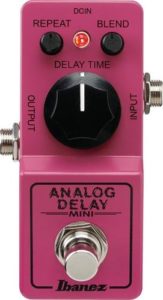
Brand New: $119.99
Used: $30 - $50
So we’ve looked at a couple of standard compact-sized delay pedals, as well as the larger-sized Strymon TimeLine. To top it all off, let’s check out a delay pedal that comes housed in a micro chassis.
The Ibanez Analog Delay Mini follows the growing trend of space-saving micro pedals. It is actually a micro version of its standard-sized brother, the Ibanez AD9 Analog Delay pedal.
Just like the MXR Carbon Copy, the Ibanez Analog Delay Mini is an analog pedal that provides warm, lush, and full sounding delays that can be used to create some really great moody soundscapes.
On the face of the pedal, there are three knobs provided for adjusting Repeat, Blend (mix), and Delay Time. A single footswitch is provided for turning the effect on and off. Unfortunately, there isn’t a tap-tempo function available, but if your aim is to create background soundscapes, then being perfectly tempo-synced often isn’t necessary.
Besides the notable space-saving size of the pedal, another thing to note is the price. For such a low price, it’s really quite amazing how great this little thing sounds.
Buy here
Final note
As you can see, delay pedals come in a wide range of prices, sizes, and functionalities. This can make it a little harder to choose one that suits you, but what often helps when choosing a delay pedal is knowing what genre of music you’ll be playing most.
Some genres of music, such as the Blues, Country, or Jazz, don’t require the use of that many delay pedals. Just take a listen to your favorite classic Jazz recordings and you will hear that many Jazz guitarists often don’t even use a delay effect.
If you’re planning on playing Classic Rock music, oftentimes a simple analog delay pedal will suffice as much of the sound spectrum will be filled with overdriven guitars. Once you start looking at Fusion, Worship, Modern Rock, Neo Soul, and even Hip Hop, then a more complex delay pedal may be necessary.
Once you’ve taken the time to think about what your primary genre of music calls for, then you’ve already dramatically narrowed down your choices. After that point, it’s down to personal preferences of sounds, ease-of-use, and space.
Regardless of what you end up using, you will always find a use for your delay pedal as it is such a fundamental key to your personal sound. Who knows, you may even end up getting two delay pedals!
Is there a delay pedal that you absolutely love using? Feel free to share it in the comments section!

